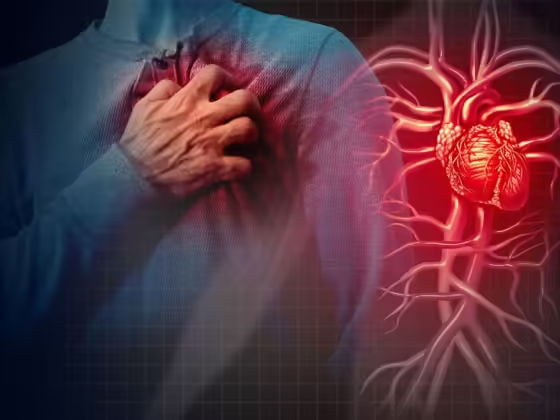New Delhi, 28 December 2024: Garlic and onions are culinary staples celebrated for their flavors and health benefits. From adding zest to dishes to their reputed medicinal properties, these ingredients hold a cherished place in kitchens worldwide. However, a recent study has raised concerns about their impact on heart health when cooked at high temperatures. The research sheds light on how the cooking methods for garlic and onions might alter their nutritional properties, potentially increasing risks to cardiovascular health.
The Nutritional Powerhouses: Garlic and Onions
Garlic and onions belong to the Allium family of vegetables, known for their rich composition of bioactive compounds. Allicin, the sulfur-containing compound in garlic, is lauded for its anti-inflammatory and antimicrobial properties. Onions are rich in quercetin, a powerful antioxidant that helps reduce oxidative stress in the body. Together, these compounds contribute to improved heart health, reduced blood pressure, and lower cholesterol levels.
Studies over the years have reinforced the role of garlic and onions in promoting cardiovascular health. Regular consumption of raw or lightly cooked garlic and onions has been linked to a decreased risk of heart disease, thanks to their ability to combat oxidative stress and inflammation.
The Impact of High-Temperature Cooking
The recent study, conducted by a team of researchers in food science and nutrition, highlights the potential risks associated with cooking garlic and onions at high temperatures. Methods such as frying, grilling, or roasting at extreme heat may degrade the essential bioactive compounds in these vegetables. This degradation not only diminishes their health benefits but may also generate harmful byproducts that could negatively affect the heart.
Formation of Harmful Compounds
Cooking at high temperatures can lead to the formation of advanced glycation end products (AGEs). These compounds are produced when proteins or fats combine with sugar in the presence of heat. AGEs are known to contribute to inflammation, oxidative stress, and arterial damage, which are key risk factors for cardiovascular diseases.
Additionally, high-heat cooking can produce acrylamide, a chemical formed during the Maillard reaction—a browning process that enhances flavor but comes with health risks. Acrylamide is recognized as a potential carcinogen and has been implicated in increasing cardiovascular risk by promoting arterial stiffness and endothelial dysfunction.
Raw and Light Cooking: A Healthier Alternative
One of the primary takeaways from the study is the emphasis on cooking methods. Raw or lightly cooked garlic and onions retain their bioactive compounds more effectively, preserving their heart-protective properties. For example:
Adding Last in Cooking: Incorporating garlic and onions toward the end of cooking can help preserve their nutritional value.
Raw Consumption: Minced garlic releases allicin, which remains intact when consumed raw, offering maximum health benefits.
Light Sautéing: Cooking garlic and onions at lower temperatures for shorter durations can minimize the loss of antioxidants and other nutrients.
Broader Implications for Diet and Heart Health
This study’s findings underscore the importance of cooking techniques in maintaining a heart-healthy diet. While garlic and onions are undoubtedly beneficial, improper cooking methods may negate their advantages and even introduce health risks. For those prioritizing cardiovascular health, understanding how to prepare these ingredients is crucial.
Balancing Flavor and Nutrition
Garlic and onions often form the flavor base for numerous cuisines, and their preparation plays a vital role in determining the final taste of a dish. However, balancing flavor with nutrition doesn’t have to mean sacrificing either. Opting for gentle cooking techniques not only preserves the flavor but also ensures the retention of health-boosting compounds.
Incorporating Other Heart-Healthy Foods
Complementing garlic and onions with other heart-healthy foods can amplify their benefits. Leafy greens, nuts, whole grains, and fatty fish are excellent additions to a heart-conscious diet. Pairing these ingredients with properly cooked garlic and onions can provide a comprehensive approach to reducing cardiovascular risk.
Practical Tips for Heart-Conscious Cooking
Here are some actionable tips to maximize the health benefits of garlic and onions while minimizing potential risks:
Experiment with Raw Additions: Incorporate raw garlic and onions into salads, dressings, and dips to maximize their nutritional value.
Use Low to Medium Heat: Opt for gentle sautéing or steaming instead of high-temperature frying or roasting.
Chop and Rest: After chopping garlic, let it rest for 10-15 minutes before cooking. This allows allicin to fully develop, enhancing its health benefits.
Avoid Burnt Garlic: Overcooking or burning garlic and onions not only affects flavor but also generates harmful compounds like acrylamide.
Cook with Healthy Oils: Use heart-healthy oils, such as olive or avocado oil, which are more stable at higher temperatures.
What This Means for Everyday Cooking
The findings of this study serve as a reminder of the broader impact of cooking techniques on health. While garlic and onions are celebrated as superfoods, their preparation can significantly influence their health outcomes. By making mindful choices in the kitchen, individuals can continue to enjoy the flavors and benefits of these ingredients without compromising their heart health.
Moreover, the study highlights the need for public awareness about the role of cooking methods in dietary health. Simple changes in preparation can go a long way in promoting cardiovascular well-being, particularly for those at risk of heart disease.










